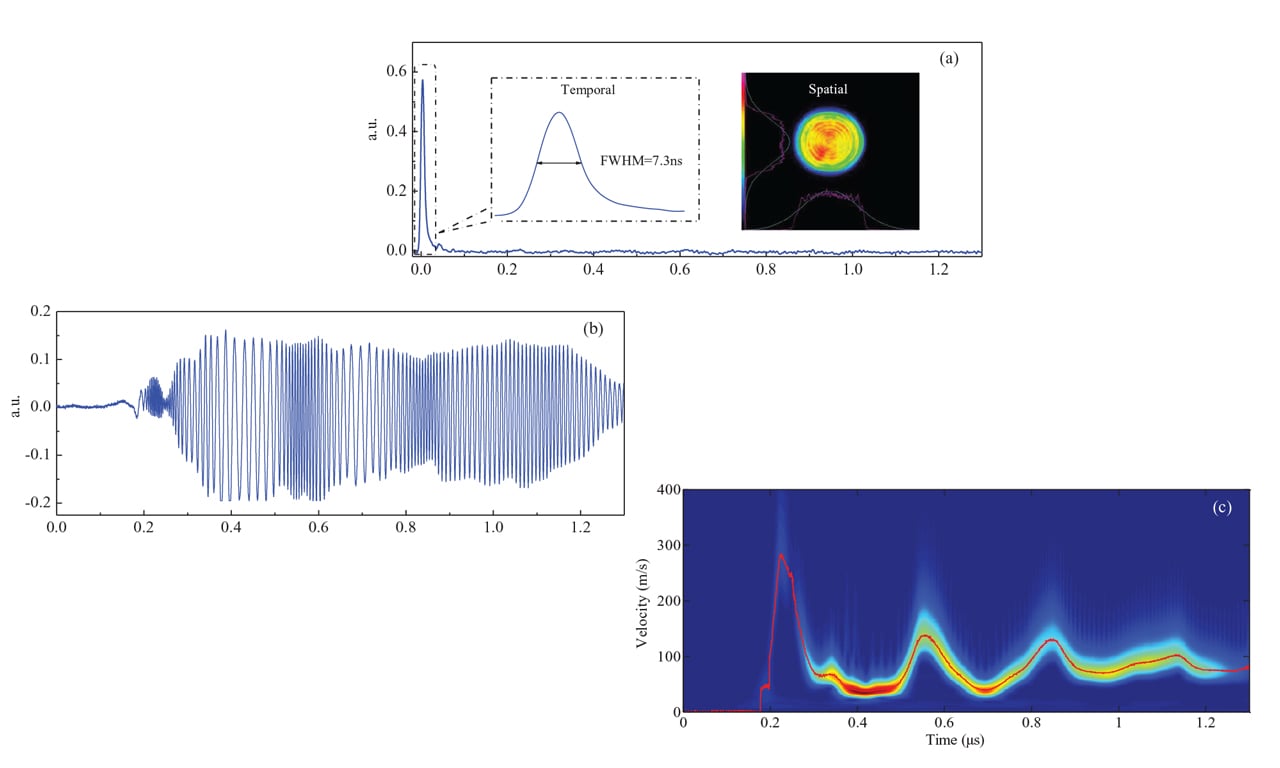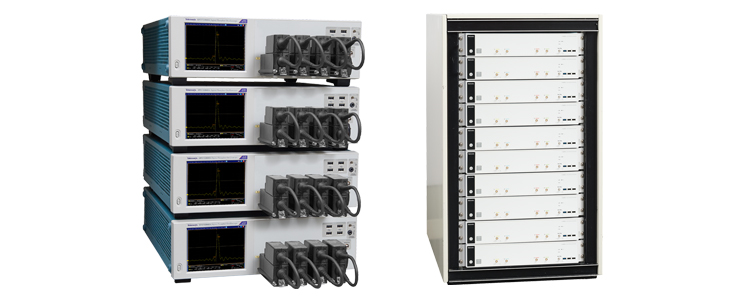Challenges in High-Speed Pulse Testing

High-speed pulse testing is at the forefront of modern research, playing a critical role in areas such as Photonic Doppler Velocimetry (PDV) and Broadband Laser Ranging (BLR) used in high energy physics exploration. The ability to accurately capture and analyze events that occur in microseconds or even nanoseconds is paramount, and the precision required is exceptionally demanding. Even minor errors in measurement can lead to significant discrepancies in interpreting dynamic events leading to costly setbacks, including delayed experiments, increased research expenses, and compromised data integrity.
Speed of Data Acquisition
A core challenge in high-speed pulse testing is the job of capturing events as they occur in extremely brief time frames. These high-speed events demand data acquisition systems that can sample at rates matching or surpassing the phenomenon under investigation. Not only must the hardware be exceptionally fast, but in some cases the accompanying software also needs to process and interpret data in real time. Enhancements in both areas are crucial to reducing latency and ensuring that every transient detail is accurately recorded.
Capturing High Fidelity Data
The reliability of high-speed data acquisitions heavily depends on the signal-to-noise ratio (SNR) of the digitizer, which is crucial for distinguishing the actual signal from background interference. Equally important is the Effective Number of Bits (ENOB), a metric that quantifies the resolution of an analog-to-digital converter (ADC) by measuring its effective performance under real-world conditions. In high-speed pulse testing, both high SNR and a high ENOB are essential for capturing accurate, high-fidelity data. Advanced filtering techniques, noise-reduction algorithms, and sophisticated instrumentation design are critical to improving both parameters. By mitigating interference and maximizing ADC performance, engineers can extract clearer signals from complex measurements, leading to more reliable data and informed decision-making.

Environmental Conditions
Testing environments for high-speed pulses are often harsh, exposing equipment to extreme conditions such as high temperatures and rapid pressure changes. These factors can not only distort measurements but may also damage sensitive instrumentation. Designing robust systems that can maintain performance under these adverse conditions is critical. This involves selecting durable materials, implementing effective thermal management, and employing protective enclosures to safeguard the testing apparatus.
Space Constraints
PDV test setups are often constrained by limited physical space, whether in compact laboratory environments or field-testing scenarios where every inch of available room must be optimized. Traditional high-speed digitizers and data acquisition systems can be bulky, consuming valuable rack space and limiting flexibility in experimental design. To address these limitations, modern low-profile digitizers provide a higher channel density while maintaining a reduced footprint, allowing researchers to integrate more measurement capability into smaller setups without sacrificing performance. Additionally, modular and scalable architectures enable engineers to configure systems that fit within tight spatial constraints while still achieving the necessary precision and resolution for high-speed pulse testing. Thoughtful equipment placement and cable management strategies also play a crucial role in minimizing clutter and ensuring efficient workflow in constrained environments.

Calibration and Alignment
Accurate measurements in PDV and similar systems are highly dependent on precise calibration and alignment. Calibration of the equipment must be meticulously aligned to ensure that velocity and displacement readings are correct. Even small misalignments can lead to significant errors that require time-consuming and costly recalibrations.
Data Analysis and Interpretation
The sheer volume of data generated by high-speed pulse testing presents its own set of challenges. Interpreting this data to extract meaningful insights requires robust analytical tools and a deep understanding of both the underlying physics and the limitations of the measurement system. Modern data analysis platforms integrate advanced algorithms that help engineers visualize trends, identify anomalies, and convert raw data into actionable insights, thereby supporting faster and more informed decision-making.
Discovering Solutions
Despite the challenges inherent in high-speed pulse testing, ongoing advancements in technology continue to unlock new possibilities. Tek offers solutions designed to enhance the precision, reliability, and efficiency of high-speed diagnostics. Products are engineered to address the unique demands of capturing and analyzing high-speed events, ensuring that your teams have the tools they need to push the boundaries of research and development.
Engineering and research teams interested in advancing their high-speed pulse testing capabilities are encouraged to explore how Tek's technology can elevate their laboratory performance. For more information on navigating the complexities of high-speed diagnostics and discovering tailored solutions, explore the recommended solution or see the additional resources provided.


